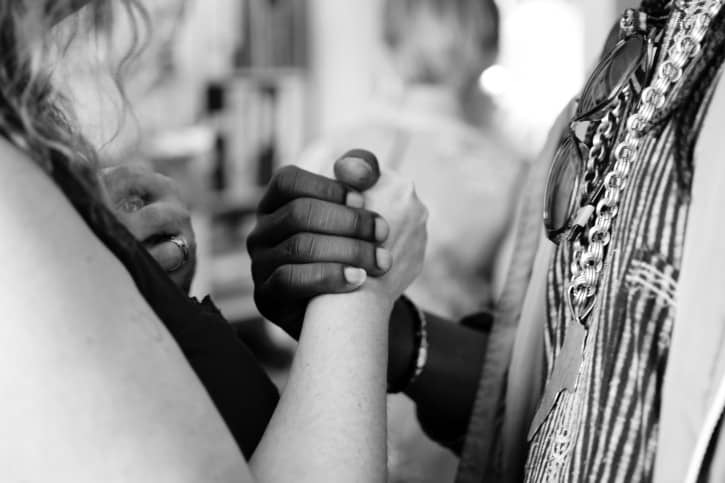As Bruner (1997) continues to explain, culturalism is much more about accepted ways of thinking, seeing and doing things. Those who have lived abroad will know what is entailed by learning a new culture, and how it fundamentally changes who you are, how you think and work often on a very tacit level. However, you do not need to move countries to have experienced cultural change. Moving work or employment will often entail a cultural shift by virtue of the fact that becoming part of a new organisation will require you to learn its ways of doing things, which will not always be in line with where one has worked before.
Crucially culturalism stresses the importance of meaning-making and the mutual recognition of symbols which are themselves situated within a social context. By ‘meaning-making’, I am not talking just about defining concepts or terms, but making sense, seeing patterns, and understanding their significance at a deeper level. Let us look at an example concerning the colour orange. A dictionary definition of this colour will likely define it as a shade somewhere between the colours of yellow and red. Yet this does not do justice to the many meanings that different cultures ascribe to orange. In middle eastern countries, orange is associated with mourning, in the far east with courage and health, whereas in Holland it is the symbol of the royal family, and in Ireland it is a colour associated with one side of the sectarian conflict between Catholics and Protestants. These meanings are derived from many years and centuries of history and tradition handed down to new generations. Outsiders to these cultures can come to know these meanings because they can be written down and recorded in sentences like these but it would take one to live in those cultures to truly come to understand them. Furthermore, and cultural insiders will understand this, meanings are not fixed or stored anywhere but change and evolve continuously as social contexts change and evolve over time.
Social contexts produce accepted ways of thinking and doing things – we rarely understand why we do them the way we do and we often don’t remember when we learned certain things were accepted and others were unacceptable. Think for example about the process of haggling. Nobody would question that this would be common in, say, a Ford garage forecourt or in the markets of China, Turkey or Egypt. However, why is it unacceptable, and surely everyone would agree that it would be, to do it in a modern British supermarket? There is no explicit rule that says it is unacceptable, and I have never seen anyone try and be scolded for it – so how do I know that it is unacceptable? This is an example of a piece of tacit know-how of this culture which takes thought and reflection to come out into the open – this is sometimes what makes tacit knowledge difficult.
This example highlights the significance of the notion of ‘practice’ in culturalism, for unlike programming computers there is no separation between ‘accumulation’ of required knowledge and its use in stipulated procedures; instead people are engaging in practice all the time, even the process of listening to a boring lecture – or rote learning knowledge items ad nauseam is still ‘practice’ – AND the knowledge (i.e. know-how AND know-that; tacit and explicit; collective and individual) is generated, developed, discarded, adapted, modified, ignored according to the practice one is engaging in at a particular time. How did I learn not to haggle in Tesco? Because that particular knowledge item has been gleaned from my own and everyone else’s participation in a supermarket shopping ‘practice’. The following implications follow from this assumption:
1) Perhaps the most meaningful learning experiences happen from or during practice rather than precede practice. So instead of teaching explicit knowledge we want learners to acquire first before they try activities using this knowledge, perhaps trying activities out while learning knowledge from these attempts may be effective too.
2) Interplay between know-how and know that, practice and knowledge, is happening all the time and it transforms knowledge mutually too – so knowledge and practice are not inert and static as in programming code but flexible and dynamic resources for mutual development.
So our pedagogy of the ‘practical’/ practice-based learning or acquisition and our understanding of it needs to change from how it might be conceived in computationalism. Acquiring factual knowledge items and remembering them is of course warranted if learners are going to get better. However, the emphasis in culturalism is on meaning making and how the canon/facts can be made sense of. Naturally the acquisition of these factual items is much easier if they mean something and ultimately make sense – this helps them to be flexibly and more profoundly understood rather than brittlely memorised. Similarly and in contrast with the computational view, practice is not really in this case a check on learner’s capacity or teacher’s input but is itself an activity that helps learners gain know-how, and therefore a careful teacher will need to observe how it is done by pupils closely and spot where improvement can be made. It is knowledge as participation (Sfard, 1998).
Part 2:
See below for posted comments. Do you have something to say?
Bruner, J. (1997). The Culture of Education. Boston: Harvard.
Sfard, A. (1998). On Two metaphors of Learning and the Dangers of Choosing Just One. American Educational Research Association, 27(2), 4-13.

